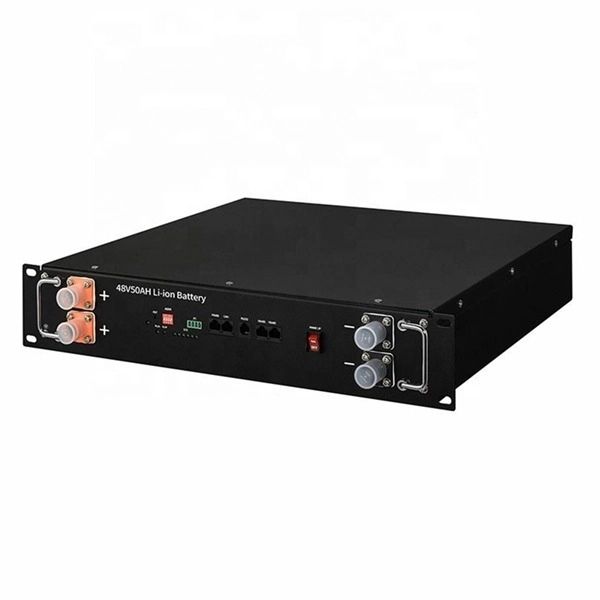Calcolatore della durata della batteria al piombo acido, al litio e LiFePO4
Questa formula stima l'autonomia delle batterie al piombo, al litio e LiFePO4 con una potenza di carico specifica. Inserendo la capacità della batteria (Ah), la tensione (V) e la potenza di carico (W), la calcolatrice determina l'autonomia della batteria (ore) in base all'efficienza del tipo di batteria selezionato.
Calcolatore della durata della batteria
Get Bulk Discounts on Lithium Batteries. Click here to Calculate Your Wholesale Price!
Battery Run Time Calculator: Importance of Choosing Differences Between Battery Types
Batterie al piombo
Lead acid batteries, a time-tested technology, have been in use since their invention in 1859 by French physicist Gaston Planté. Their reliability and relatively low cost make them a secure and financially savvy choice for many applications. Lead acid batteries are commonly found in:- Automobili: La maggior parte delle batterie per auto sono al piombo e forniscono l'energia necessaria per avviare il motore e far funzionare l'elettronica del veicolo.
- Sistemi di alimentazione di backup: Sono spesso utilizzati nei gruppi di continuità (UPS) per l'alimentazione di backup di emergenza.
- Stoccaggio di energia rinnovabile: Le batterie al piombo immagazzinano energia nei sistemi solari ed eolici.
Batterie al litio
Lithium batteries, a more modern and high-performance technology, are known for their high energy density, lightweight, and long lifespan. These characteristics instill confidence and reassurance in their performance and longevity. Advantages of lithium batteries over lead acid batteries include:- Maggiore densità di energia: Le batterie al litio immagazzinano più energia in un pacchetto più piccolo e leggero.
- Durata della vita più lunga: In genere durano più a lungo, con più cicli di carica-scarica.
- Ricarica più veloce: Lithium batteries can be faster than lead acid batteries.
- Meno manutenzione: Richiedono meno manutenzione e non hanno effetto memoria.
Batterie LiFePO4
LiFePO4 batteries, also known as lithium iron phosphate batteries, are an advanced type of lithium battery. Their safety and durability make them a secure and confident choice for high-demand and critical applications. Benefits of LiFePO4 batteries include:- Sicurezza: They are more stable and less prone to thermal runaway or catching fire than other lithium-ion batteries.
- Lunga durata: Le batterie LiFePO4 possono sopportare migliaia di cicli di carica-scarica, il che le rende molto durevoli.
- Ampio intervallo di temperature: They perform well across various temperatures.
- Tassi di scarico elevati: Queste batterie possono fornire un'elevata potenza per applicazioni impegnative.
- Veicoli elettrici: Fornire una fonte di alimentazione più sicura e più duratura.
- Sistemi di accumulo dell'energia: These are used in home and industrial renewable energy storage.
- Batterie marine e camper: Offering reliable recreational vehicle and boat power.
Calcolatore dell'autonomia della batteria: il ruolo di capacità, tensione, efficienza e potenza di carico
Capacità della batteria
Capacità della batteria measures the amount of energy a battery can store. It is usually expressed in ampere-hours (Ah), which indicates how much current a battery can supply over a specific period. For example, a battery with a capacity of 10 Ah can deliver 10 amperes for one hour or 1 ampere for 10 hours. Knowing the battery capacity is crucial because it helps determine how long the battery will last under a given load. Standardized tests are conducted to measure battery capacity, such as the 20-hour rate test. This test involves discharging the battery at a constant current until it reaches a specific cutoff voltage. For instance, a 100 Ah battery would be discharged at 5 amps (100 Ah / 20 hours = 5 amps). The capacity is then calculated based on the discharge current and time.Voltaggio batteria
Battery voltage is the electrical potential difference between a battery’s positive and negative terminals. It is measured in volts (V). A battery’s voltage affects its ability to deliver power to a load. Higher-voltage batteries can provide more power, making them suitable for high-power applications. Typical battery voltage levels vary based on their type and application. For example, lead-acid batteries often come in 12V configurations, while lithium-ion batteries can be found in various voltages, such as 12V, 24V, 36V, and 48V. The voltage also influences the battery’s efficiency and performance, impacting the overall runtime.Efficienza della batteria
Battery efficiency refers to the percentage of energy stored in the battery that can be retrieved during discharge. Different types of batteries have varying efficiency levels. For example, lead-acid batteries typically have an efficiency of around 80%, meaning 80% of the energy put into the battery is retrievable. In contrast, lithium-ion batteries have higher efficiency, often around 90%, and LiFePO4 batteries can reach up to 95%. Efficiency is critical in determining how effectively a battery can power a load. High-efficiency batteries waste less energy, providing more usable power and extending the battery’s runtime.Carica potenza
Load power is the amount consumed by the device or system connected to the battery. It is measured in watts (W). Load power directly affects the battery’s discharge rate and, consequently, its runtime. A higher load power will deplete the battery faster, while a lower load power will allow the battery to last longer. For example, if a device consumes 50 watts and is connected to a 12V battery, it will draw approximately 4.17 amperes (50W / 12V = 4.17A). The battery’s capacity and efficiency determine how long it can sustain this load before recharging.Perché questi fattori sono importanti nel calcolatore
The Lead Acid, Lithium & LiFePO4 Battery Run Time Calculator uses these four factors—capacità della batteria, voltage, efficiency, and load power—to estimate how long a battery will last under a specific load. Here’s why each factor is essential:- Capacità della batteria: Determina l'energia totale disponibile per il carico.
- Voltaggio batteria: Influisce sull'erogazione della potenza e sulla compatibilità con il carico.
- Efficienza della batteria: Influisce sulla quantità di energia utilizzabile e sulle prestazioni complessive.
- Carica potenza: Dictates the battery’s discharge rate.
Related Products
Learn More About Battery
No posts found



































